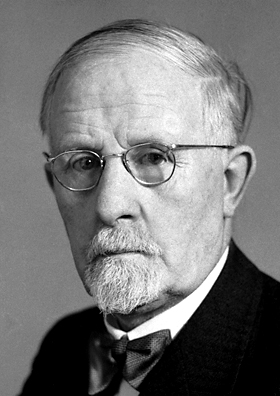Walter Rudolf Hess facts for kids
Quick facts for kids
Walter Rudolf Hess
|
|
|---|---|
 |
|
| Born | 17 March 1881 Frauenfeld, Thurgau, Switzerland
|
| Died | 12 August 1973 (aged 92) Locarno, Ticino, Switzerland
|
| Alma mater |
|
| Awards |
|
| Scientific career | |
| Fields | Physiology |
| Institutions | University of Zurich, ETH Zürich |
Walter Rudolf Hess (born March 17, 1881 – died August 12, 1973) was a scientist from Switzerland. He was a physiologist, which means he studied how living things work. In 1949, he won the Nobel Prize in Physiology or Medicine. He earned this award for figuring out which parts of the brain control our internal organs. He shared the prize with another scientist, Egas Moniz.
Contents
About Walter Hess
Walter Hess was born in Frauenfeld, Switzerland. He was one of three children. His father, Clemens Hess, was a scientist too. He encouraged Walter to explore science from a young age. They even did experiments together in their home physics lab.
Early Life and Education
Walter started studying medicine in 1899. He went to universities in Lausanne, Berlin, Kiel, and Zurich. In 1906, he earned his medical degree from the University of Zürich. After that, he trained to be a surgeon. He worked in Münsterlingen, near his hometown.
He also developed a special tool called a viscosimeter. This tool measured how thick blood was. He wrote about this in his first scientific paper in 1906.
Becoming an Eye Doctor
In 1907, Walter decided to become an eye doctor. He trained at the University of Zurich. Soon after, he opened his own eye clinic in Rapperswil SG. During this time, he invented the "Hess screen." This was a tool used to check people's vision.
Walter married Louise Sandmeier. They had a daughter, Gertrud, in 1910. Their son, Rudolf Max, was born in 1913.
A Shift to Research
Even though his eye clinic was doing well, Walter decided to focus on research in 1912. He was very interested in how blood flows and how we breathe. He became a university lecturer in 1913.
During the First World War, he spent a year at the University of Bonn. In 1917, he became a full professor. He also became the director of the Physiological Institute at the University of Zürich. He held this important role until he retired in 1951.
Nobel Prize Work
In the 1930s, Walter Hess started his most famous work. He began to "map" the brain. This means he found out which specific parts of the brain control our internal organs. He did this research using cats. This amazing work led to him winning the Nobel Prize in 1949.
Walter also helped start a foundation for weather research in 1930. It was called the International Foundation for the High Alpine Research Station Jungfraujoch. He led this foundation for seven years. He also supported scientific research that involved animal experimentation. He believed it was important for learning more about living things.
Later Years
Walter Hess retired in 1951. However, he continued to work at the university in an office. In 1967, he moved to Ascona. He passed away in 1973 at the age of 92 in Locarno, Switzerland.
How Walter Hess Studied the Brain
Walter Hess used special methods to study the brain. These methods were developed in the late 1920s. He used tiny tools called electrodes. He placed these electrodes in very specific parts of the brain. Then, he would send a small electrical signal. This allowed him to see how different brain areas caused different body reactions.
His Special Technique
He created a unique method called "interrupted direct-current (DC) stimulation." This technique used gentle electrical signals. The signals were very weak, like a tiny pulse. They were also very short, lasting only a few milliseconds. He used very thin electrodes, about the size of a hair.
Discoveries in the Hypothalamus
Walter Hess focused a lot on a brain area called the hypothalamus. When he stimulated different parts of the hypothalamus, he saw different reactions. For example, stimulating one part could make an animal excited. Stimulating another part could make it calm.
He found that stimulating the front part of the hypothalamus could cause blood pressure to drop. It could also slow down breathing. This part also seemed linked to feelings like hunger or thirst. But if he stimulated the back part, animals showed strong excitement. They might even act like they were defending themselves.
Hess also discovered that he could make cats fall asleep by stimulating certain brain areas. At first, some people didn't believe this. But later, other scientists confirmed his findings. His own son, Rudolf Max Hess, was one of the scientists who proved it.
Awards and Recognition
Walter Hess received many honors for his important work.
- He won the Marcel Benoist Prize in 1932.
- He received special honorary degrees from several universities. These included the University of Bern, University of Geneva, McGill University, and University of Freiburg.
- His biggest award was the Nobel Prize in Physiology and Medicine in 1949.
Images for kids
See also
 In Spanish: Walter Rudolf Hess para niños
In Spanish: Walter Rudolf Hess para niños


